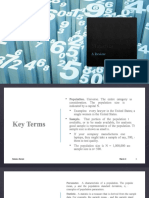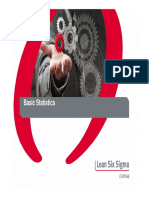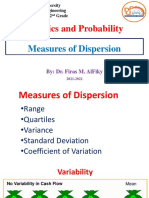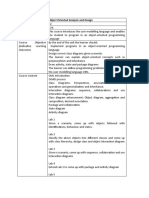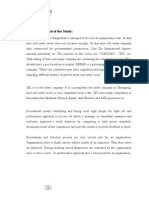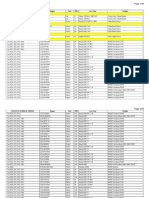0% found this document useful (0 votes)
13 views30 pagesLecture 3
This document outlines fundamental statistical models and concepts relevant to quality control, including descriptive and inferential statistics, measures of central tendency, and measures of dispersion. It emphasizes the importance of visual data displays such as histograms, box plots, and stem-and-leaf plots for interpreting data. Additionally, it covers the calculation and interpretation of sample statistics like mean, variance, and standard deviation, as well as the selection of appropriate probability distributions.
Uploaded by
tarekahmed3653Copyright
© © All Rights Reserved
We take content rights seriously. If you suspect this is your content, claim it here.
Available Formats
Download as PDF, TXT or read online on Scribd
0% found this document useful (0 votes)
13 views30 pagesLecture 3
This document outlines fundamental statistical models and concepts relevant to quality control, including descriptive and inferential statistics, measures of central tendency, and measures of dispersion. It emphasizes the importance of visual data displays such as histograms, box plots, and stem-and-leaf plots for interpreting data. Additionally, it covers the calculation and interpretation of sample statistics like mean, variance, and standard deviation, as well as the selection of appropriate probability distributions.
Uploaded by
tarekahmed3653Copyright
© © All Rights Reserved
We take content rights seriously. If you suspect this is your content, claim it here.
Available Formats
Download as PDF, TXT or read online on Scribd
/ 30





































